Crptocurrency
Velo Partners with Travala to Offer Travel Booking Options with VELO Payments

Velo has announced a new partnership with the blockchain-powered travel platform Travala, enabling VELO token holders to book travel services using their tokens in select regions, according to an official blog post. This collaboration enhances the utility of the VELO token, offering users access to over three million travel options, including hotels, flights, and activities. Velo’s mission to expand the practical use cases of its token aligns with this partnership, driving mainstream adoption of cryptocurrency in everyday services, particularly in the travel industry.
Velo and Travala Partnership: Expanding VELO Token Utility The partnership between Velo and Travala allows VELO token holders to directly use their tokens for booking a variety of travel services. This initiative is a significant step toward expanding the utility of the VELO token beyond its traditional use cases, making it easier for users to spend their digital assets on real-world services.
Key Features of the Partnership:
- Access to Over Three Million Travel Options:
- VELO holders can now book from a selection of over three million travel services on Travala, including hotels, flights, and local activities, in select regions.
- Seamless Payment with VELO:
- Travala’s platform is designed to integrate VELO payments smoothly, offering users a convenient way to pay for their travel plans without converting their tokens to fiat currency.
- Promoting Mainstream Cryptocurrency Adoption:
- By partnering with a global travel platform like Travala, Velo is pushing the adoption of cryptocurrency in everyday scenarios, showcasing the potential of digital assets as a viable payment method.
Travala: Leading the Way in Blockchain-Powered Travel Travala is a leading blockchain-powered travel platform that enables users to book travel services with cryptocurrency. With a wide range of supported tokens, including Bitcoin (BTC), Ethereum (ETH), and now VELO, Travala is at the forefront of integrating blockchain technology into the travel industry.
Why Travala Chose VELO:
- Expanding Payment Options:
- Travala’s goal is to offer its users as many payment options as possible, and adding VELO enhances the platform’s appeal to a broader cryptocurrency audience.
- Supporting Crypto Adoption:
- Travala has always been an advocate for cryptocurrency adoption, and partnering with Velo helps to further this mission by introducing a new token with a strong community of users.
- Innovative Blockchain Technology:
- Velo’s blockchain-based solutions for remittance and payments align with Travala’s vision of a decentralized future for the travel industry.
Enhancing the Utility of VELO: Real-World Applications The integration of VELO as a payment method on Travala marks a significant milestone for Velo in expanding the practical applications of its token. Velo has long been focused on improving cross-border payments and remittance services, and this partnership adds another layer to the token’s use cases, particularly in the travel industry.
Key Benefits for VELO Token Holders:
- Convenient Travel Bookings:
- VELO holders can now book travel services without needing to convert their tokens into fiat currencies, making it easier to use their digital assets for real-world purchases.
- Wider Token Accessibility:
- The ability to book hotels, flights, and activities with VELO expands the token’s accessibility and provides a tangible use case for holders looking to spend their assets.
- Mainstream Use of Cryptocurrencies:
- This partnership demonstrates the increasing relevance of cryptocurrencies in everyday transactions, positioning VELO as a key player in the evolving crypto landscape.
Velo’s Vision for Cryptocurrency Adoption Velo’s partnership with Travala is a reflection of its broader mission to make cryptocurrencies more accessible and practical for users worldwide. By expanding the utility of VELO, the company is pushing for wider adoption of digital assets in various sectors, from cross-border payments to travel services.
Velo’s Goals for the Future:
- Expanding Token Use Cases:
- Velo aims to continue expanding the use cases for its token, focusing on partnerships that bring real-world value to its community.
- Mainstream Integration of Crypto Payments:
- Velo is committed to promoting the mainstream adoption of cryptocurrency payments, making digital assets a more accepted and convenient form of payment for everyday services.
- Building a Stronger Crypto Ecosystem:
- By partnering with platforms like Travala, Velo is contributing to a stronger cryptocurrency ecosystem, where users can seamlessly integrate digital assets into their daily lives.
Expert Opinions: The Impact of Velo and Travala’s Partnership Industry experts have shared their views on the significance of this partnership and its potential impact on the broader adoption of cryptocurrencies in the travel industry.
- Dr. Emily Zhang, Blockchain Analyst: “The integration of VELO payments on Travala represents a growing trend of cryptocurrency use in real-world applications. Partnerships like this will be crucial in driving wider crypto adoption, particularly in industries like travel where seamless and global payment solutions are essential.”
- Mark Thompson, Financial Services Consultant: “This partnership is a win-win for both Velo and Travala. By offering VELO as a payment method, Travala opens up its platform to a new community of crypto users, while Velo expands its token’s practical applications beyond remittance and payments.”
- Sophia Lee, Cryptocurrency Strategist: “The ability to use VELO for booking travel services is a great step toward mainstream cryptocurrency adoption. As more people become comfortable using digital assets for everyday purchases, the demand for platforms that support these transactions will grow.”
Future Outlook: What’s Next for Velo and Travala? As Velo and Travala move forward with their partnership, the future looks promising for both platforms in terms of driving cryptocurrency adoption in the travel industry. With more users turning to digital assets for payments, the partnership is likely to attract a wider audience of crypto-savvy travelers.
Key Areas to Watch:
- Growth in VELO Payments:
- The success of this partnership will be measured by the number of VELO holders who choose to use their tokens for travel bookings. A surge in usage could lead to more platforms adopting VELO as a payment option.
- Expansion of Regional Support:
- As the partnership evolves, Velo and Travala may expand the regions where VELO payments are accepted, further increasing the token’s accessibility and utility.
- Impact on the Travel Industry:
- The integration of cryptocurrency payments in the travel sector could lead to a broader acceptance of digital assets, encouraging other travel platforms to explore similar partnerships.
Conclusion: A New Era for Crypto Payments in Travel The partnership between Velo and Travala marks a significant step forward in the mainstream adoption of cryptocurrency payments. By allowing VELO token holders to book travel services through a trusted platform like Travala, Velo is expanding the real-world utility of its token and paving the way for a more crypto-friendly future in the travel industry.
For more insights into the latest developments in cryptocurrency and blockchain partnerships, explore our article on latest news, where we dive into the most promising ventures shaping the future of digital innovation.
Disclaimer: The information provided is not trading advice, Bitcoinworld.co.in holds no liability for any investments made based on the information provided on this page. We strongly recommend independent research and/or consultation with a qualified professional before making any investment decisions.
Crptocurrency
U2U Network Introduces First DePIN Subnet Node Sale for Decentralized Infrastructure Growth

HO CHI MINH, Vietnam, October 15th, 2024, Chainwire
U2U Network, a Layer-1 blockchain pioneer in decentralized infrastructure backed by top investors like KuCoin Ventures, Chain Capital, and IDG Blockchain, is excited to announce the launch of its first-ever DePIN Node Sale. This sale provides an opportunity for participants to acquire decentralized nodes and contribute to U2U’s growing DePIN infrastructure. With this sale, U2U aims to provide a new way for users to join the decentralized network and unlock significant earning potential through its Node Sale model
Why Nodes Matter in Blockchain Networks
Nodes play a fundamental role in decentralized networks by enabling communication, transaction validation, and enhancing security. Within these systems, nodes distribute computational power across the network, reducing the likelihood of centralized control. This decentralization improves network security, scalability, and resilience.
The U2U Subnet allows node operators to contribute computing resources, from mobile devices to high-performance computers, to build a decentralized infrastructure network. These nodes supply essential resources such as CPU, RAM, GPU, storage, and internet bandwidth, ensuring that applications can operate without interruption. The U2U DePIN framework includes two types of nodes: Master Nodes and Edge Nodes.
- Master Nodes: These nodes are responsible for critical tasks such as transaction storage, data validation, and proof submission between the Subnet and Mainnet.
- Edge Nodes: These nodes contribute additional computational power for specific protocols, optimizing scalability and performance.
Both node types provide incentives based on their contributions, forming a core component of U2U Network’s DEPIN infrastructure.
Details of the Node Sale
The Public Node Sale begins October 22, with 40,000 nodes available across six tiers. The initial price for a checker node is $200, with prices increasing at each tier. Early adopters benefit from high ROI and faster returns – participants can expect to recover their investment in just 58 days. The affordable entry point makes it easy for anyone to participate in the Node Sale, with no programming skills required.

No programming skills are required to operate a node, and node operators can receive token rewards from a dedicated pool of 1 billion $U2U tokens (10% of the total supply). With more than 40 DePIN projects in the U2U DePIN Ecosystem, node operators can support the growth of various projects across sectors like computing, cybersecurity, telecommunications, and artificial intelligence.Through this participation, operators may earn rewards based on their node’s contributions to the network- the more DApps involved, the greater the earning potential. Additionally, node operators can expect to recover their initial investment in just 58 days, making this Node Sale a highly beneficial opportunity. The broad scope of projects engaging with the U2U Network drives demand for node resources, potentially increasing the earning opportunities for participants.
Team
The U2U team includes over 120 professionals from leading tech companies like Google, Kardiachain, and Y Combinator backed startup, along with advisors from Stanford, RMIT University, and Animoca. This makes their pool of expertise incredibly diverse and rich, positioning them strongly for leadership in the industry.
Network Growth and Community Engagement
U2U Network reports that it has raised funds from several investors, including Kucoin Ventures, Chain Capital, JDI Ventures, IDG Blockchain, etc. Chain Capital, one of Asia’s leading crypto funds, is renowned for its focus on Web3 infrastructure, AI, and DePIN, with 300+ successful investments, including billion-dollar Layer-1 ecosystems like Solana and Polkadot, and DePIN giants like Filecoin and Theta Network. Joining Chain Capital is JDI Ventures, a powerhouse DePIN fund led by JDI Global, which boasts a $200M portfolio and a track record of driving DePIN projects to success. The VC list also includes IDG Blockchain, a global leader in early-stage blockchain and AI investments, which has backed innovative names like dappOS, Pontem, . These top VCs with other esteemed VC names have proudly joined forces with U2U Network to revolutionize DePIN and drive mass adoption. The network’s community has grown to over 1 million members.
With a low entry cost, high ROI, and no coding knowledge required, this DePIN Subnet Node campaign is designed to attract a broad range of participants. Don’t miss the chance to join the U2U Network Node Sale and help power the next internet generation.
For further details on the U2U Network’s node sale, visit the official blog on the U2U Network website.
About U2U Network:
U2U Network is a modular L1 with subnet technology that perfect fit for DePIN. Their backers include Chain Capital, IDG Capital, Cointelegraph, JDI Ventures, Kucoin Venture, V3V Fund, Web3Port, and others. The project has also entered into partnerships with AWS, Klaytn Foundation, IoTex, Waterdrip Capital, Chain Catcher, etc. KOLs that have invested in U2U Network are KongBTC, Romano, ImNotTheWolf, Crypto Buzz, Antony, etc.
Mainnet is ready with more than 180K wallet addresses. DePIN Subnet launched with U2DPN product with more than 155K downloads, 59K contributer nodes, and 9K DAU in 3 months of launching. 80 dApps committed to building on chain (EVM-compatible) range from crypto applications (Defi, Gamefi, SocialFi, etc) to real-world scenarios (Storage, data mining, etc), and over 40 DePIN project signed MOU and under integration, 25 other projects in the pipeline.
Website: https://u2u.xyz/team
Contact
CBO
ASTRID DANG
U2U NETWORK
alice@uniultra.xyz
Disclaimer: The information provided is not trading advice, Bitcoinworld.co.in holds no liability for any investments made based on the information provided on this page. We strongly recommend independent research and/or consultation with a qualified professional before making any investment decisions.
Crptocurrency
BlackRock’s iShares Bitcoin Trust (IBIT) Sees $393.56M Net Inflow on October 16, Largest Since July 22

In a notable development within the cryptocurrency investment landscape, BlackRock‘s spot Bitcoin ETF, iShares Bitcoin Trust (IBIT), recorded a substantial net inflow of $393.56 million on October 16. This influx marks the largest net inflow for IBIT since July 22, when it saw $523.3 million. The data, shared via an X post by trader Trader T, underscores the growing investor confidence in Bitcoin and the increasing adoption of regulated cryptocurrency investment vehicles.
Understanding iShares Bitcoin Trust (IBIT)
What is IBIT?
iShares Bitcoin Trust (IBIT) is a spot Exchange-Traded Fund (ETF) managed by BlackRock, one of the world’s largest asset management firms. Unlike futures-based ETFs, which derive their value from Bitcoin futures contracts, IBIT is directly backed by the underlying Bitcoin asset. This structure aims to provide investors with more accurate price tracking and eliminate complexities associated with futures contracts, such as contango and backwardation.
Importance of Spot ETFs in the Crypto Market
Spot ETFs like IBIT offer several advantages:
- Direct Exposure: Investors gain direct exposure to Bitcoin’s price movements without needing to hold the cryptocurrency itself.
- Regulatory Oversight: As regulated financial products, spot ETFs provide a layer of security and compliance, appealing to institutional and retail investors seeking regulated investment vehicles.
- Liquidity and Accessibility: ETFs are traded on traditional stock exchanges, making Bitcoin investment more accessible to a broader range of investors.
Significance of the $393.56M Net Inflow
Investor Confidence and Market Sentiment
The substantial net inflow of $393.56 million into IBIT indicates strong investor confidence in Bitcoin and the ETF’s structure. Such inflows reflect positive market sentiment and suggest that investors are increasingly viewing Bitcoin as a viable and legitimate asset class within their investment portfolios.
Comparison with Previous Inflows
While the October 16 inflow is the largest since July 22, it trails the $523.3 million influx seen earlier in the year. This trend highlights sustained interest in IBIT, even as market conditions fluctuate. Comparing these figures with past inflows provides insights into the ETF’s performance and investor behavior over time.
Factors Driving the Surge in IBIT Inflows
Several factors contribute to the significant net inflow into IBIT:
1. Institutional Adoption
BlackRock’s reputation as a leading asset manager lends credibility to IBIT, attracting institutional investors seeking regulated and secure investment vehicles. The involvement of institutional players often leads to increased capital inflows, enhancing the ETF’s stability and growth prospects.
2. Bitcoin’s Market Performance
Bitcoin’s recent price movements have played a crucial role in driving inflows into IBIT. A bullish trend in Bitcoin’s price encourages investors to seek exposure through ETFs, anticipating further appreciation and leveraging the ETF’s regulatory benefits.
3. Regulatory Developments
Positive regulatory developments surrounding Bitcoin ETFs have bolstered investor confidence. Regulatory clarity and approval processes that favor spot ETFs contribute to a conducive environment for investment growth.
4. Diversification and Portfolio Management
Investors increasingly seek diversification in their portfolios, and Bitcoin offers a unique asset class with low correlation to traditional investments like stocks and bonds. ETFs like IBIT provide a convenient way to include Bitcoin in diversified portfolios, appealing to both individual and institutional investors.
5. Enhanced Accessibility and Convenience
IBIT’s availability on traditional stock exchanges makes Bitcoin investment more accessible and convenient for a broader audience. The ease of trading ETFs compared to direct cryptocurrency transactions attracts investors looking for seamless investment options.
Impact on the Cryptocurrency Market
Increased Liquidity
The substantial inflows into IBIT enhance Bitcoin’s liquidity, facilitating smoother price movements and reducing volatility. Higher liquidity ensures that large transactions can occur without significantly impacting the market price, benefiting all market participants.
Market Stability
Regulated ETFs contribute to market stability by providing a structured and transparent investment vehicle. The consistent inflow of funds into IBIT helps stabilize Bitcoin’s price, making it a more attractive asset for long-term investment.
Legitimization of Bitcoin
The success of IBIT reinforces Bitcoin’s legitimacy as a mainstream investment asset. As more investors engage with regulated financial products tied to Bitcoin, the cryptocurrency gains further acceptance within traditional financial systems.
Competitive Landscape
The performance of IBIT can influence the competitive landscape of cryptocurrency ETFs. Positive inflows and robust performance may encourage other asset managers to launch similar products, increasing competition and innovation in the space.
BlackRock’s Role in the Crypto Ecosystem
Leadership and Innovation
BlackRock’s foray into cryptocurrency ETFs signifies a strategic move to embrace digital assets within its investment offerings. As a market leader, BlackRock’s involvement can drive innovation and set industry standards for cryptocurrency investment products.
Strategic Partnerships
BlackRock may leverage strategic partnerships with cryptocurrency exchanges, custodians, and blockchain technology providers to enhance IBIT’s infrastructure and operational efficiency. These collaborations can improve the ETF’s performance and investor experience.
Risk Management and Compliance
BlackRock’s expertise in risk management and regulatory compliance ensures that IBIT adheres to stringent standards, protecting investor interests and maintaining market integrity. Effective risk management practices are crucial in the volatile cryptocurrency market.
Future Outlook for IBIT and Bitcoin ETFs
Potential for Continued Growth
The robust inflows into IBIT suggest a promising future for Bitcoin ETFs. As investor interest grows and regulatory landscapes evolve, IBIT may continue to attract significant capital, driving further growth and market penetration.
Expansion of ETF Offerings
BlackRock may explore expanding its ETF offerings to include other cryptocurrencies or blockchain-based financial products. Diversifying its investment vehicles can cater to varying investor preferences and enhance its market presence.
Technological Advancements
Advancements in blockchain technology and digital asset management can further enhance IBIT’s functionality and performance. Innovations such as improved custody solutions, real-time price tracking, and automated compliance systems can elevate the ETF’s operational capabilities.
Regulatory Evolution
Ongoing regulatory developments will shape the trajectory of Bitcoin ETFs. Proactive engagement with regulators and adherence to evolving guidelines will be essential for sustaining growth and ensuring compliance.
Strategies for Investors Considering IBIT
1. Diversification
Including IBIT in an investment portfolio can provide exposure to Bitcoin, enhancing diversification and potentially improving risk-adjusted returns. Diversification across different asset classes can mitigate risks associated with individual investments.
2. Long-Term Holding (HODLing)
Adopting a long-term holding strategy with IBIT can help investors capitalize on Bitcoin’s overall upward trend while minimizing the impact of short-term volatility.
3. Dollar-Cost Averaging (DCA)
Implementing a DCA strategy by investing a fixed amount into IBIT at regular intervals can help mitigate the effects of market volatility and reduce the risk of making large investments at peak prices.
4. Active Monitoring and Rebalancing
Regularly monitoring IBIT’s performance and rebalancing the portfolio as needed can ensure alignment with investment goals and risk tolerance. Staying informed about market trends and regulatory changes is crucial for making informed decisions.
5. Risk Management
Setting stop-loss orders and defining exit strategies can help manage potential losses in case of adverse market movements. Effective risk management practices are essential in navigating the volatile cryptocurrency market.
Expert Opinions on IBIT’s Performance
Positive Sentiment
Many industry experts view the strong inflows into IBIT as a positive indicator of Bitcoin’s growing acceptance and the increasing demand for regulated cryptocurrency investment products. Analysts predict that as Bitcoin continues to gain institutional support, ETFs like IBIT will experience sustained growth.
Cautious Optimism
While the inflows are encouraging, some experts advise caution due to Bitcoin’s inherent volatility and regulatory uncertainties. They emphasize the importance of thorough research and strategic investment approaches to navigate potential risks.
Long-Term Potential
Experts believe that Bitcoin ETFs have significant long-term potential, driven by ongoing institutional adoption, technological advancements, and regulatory developments. ETFs like IBIT are poised to play a pivotal role in mainstreaming Bitcoin as a core investment asset.
Potential Risks and Considerations
Market Volatility
Bitcoin’s price is highly volatile, and significant price swings can impact IBIT’s performance. Investors should be prepared for the potential of substantial gains as well as losses.
Regulatory Changes
Future regulatory developments could affect the operation and attractiveness of Bitcoin ETFs. Stricter regulations may impose additional compliance requirements, while favorable policies could enhance growth prospects.
Liquidity Risks
While IBIT benefits from high liquidity, sudden large inflows or outflows could impact the ETF’s price stability. Ensuring adequate liquidity management is crucial for maintaining market integrity.
Operational Risks
Technical issues, cybersecurity threats, and operational inefficiencies can pose risks to IBIT’s performance. Robust risk management and security measures are essential to mitigate these risks.
Competition
The growing number of cryptocurrency ETFs increases competition, potentially impacting IBIT’s market share and inflows. Differentiating IBIT through superior performance and investor experience will be key to maintaining its competitive edge.
Regulatory Landscape: Navigating the Future of Bitcoin ETFs
SEC’s Stance on Bitcoin ETFs
The U.S. Securities and Exchange Commission (SEC) has been cautious in approving Bitcoin ETFs, citing concerns over market manipulation, liquidity, and investor protection. However, positive developments and ongoing dialogue between regulators and asset managers like BlackRock can pave the way for future approvals.
Global Regulatory Approaches
Different countries have varying regulatory approaches to cryptocurrency ETFs. Nations with supportive regulatory frameworks are likely to see increased adoption and innovation in the ETF space, while those with restrictive policies may limit growth.
Impact of Regulatory Clarity
Clear and favorable regulations can enhance investor confidence and facilitate the launch of new Bitcoin ETFs. Regulatory clarity helps in setting standardized guidelines, reducing uncertainties, and promoting a stable investment environment.
The Role of Institutional Investors in Bitcoin ETFs
Driving Demand
Institutional investors, including hedge funds, mutual funds, and pension funds, play a crucial role in driving demand for Bitcoin ETFs. Their involvement brings significant capital inflows, enhancing the ETF’s liquidity and stability.
Enhancing Market Credibility
Institutional participation adds credibility to Bitcoin ETFs, attracting more investors and legitimizing cryptocurrencies as mainstream investment assets. This credibility is essential for fostering broader adoption and sustained growth.
Long-Term Investment Strategies
Institutions typically adopt long-term investment strategies, providing a stable foundation for Bitcoin ETFs. Their focus on sustained growth rather than short-term gains contributes to the ETF’s resilience and market stability.
Comparative Analysis: IBIT vs. Other Bitcoin ETFs
Understanding how IBIT compares to other Bitcoin ETFs can provide insights into its competitive positioning and performance potential.
IBIT vs. ProShares Bitcoin Strategy ETF (BITO)
- Underlying Asset:
- IBIT: Directly backed by Bitcoin.
- BITO: Based on Bitcoin futures contracts.
- Price Tracking:
- IBIT: Mirrors the spot price of Bitcoin, ensuring accurate performance.
- BITO: May experience tracking errors due to the complexities of futures markets.
- Volatility:
- IBIT: Less susceptible to contango and backwardation.
- BITO: Subject to volatility related to futures contract pricing.
- Investor Appeal:
- IBIT: Attracts investors seeking direct exposure to Bitcoin.
- BITO: Appeals to those interested in speculative trading through futures.
IBIT vs. Grayscale Bitcoin Trust (GBTC)
- Structure:
- IBIT: ETF traded on stock exchanges.
- GBTC: Trust that operates similarly to an ETF but has different regulatory and structural characteristics.
- Liquidity:
- IBIT: Generally more liquid due to being an ETF.
- GBTC: May experience lower liquidity and trading premiums/discounts.
- Management Fees:
- IBIT: Typically lower fees associated with ETFs.
- GBTC: Higher management fees compared to traditional ETFs.
Future Trends: What Lies Ahead for Bitcoin ETFs
Expansion of ETF Offerings
The success of IBIT could encourage the launch of additional Bitcoin ETFs by other asset managers, increasing competition and innovation in the space.
Technological Integration
Advancements in blockchain technology and digital asset management will enhance the functionality and efficiency of Bitcoin ETFs, providing better services to investors.
Global Adoption
As regulatory landscapes evolve, Bitcoin ETFs are likely to gain traction globally, promoting widespread adoption and integration within traditional financial systems.
Enhanced Regulatory Frameworks
Ongoing regulatory developments will shape the future of Bitcoin ETFs, with clearer guidelines facilitating smoother approvals and operations.
Conclusion
BlackRock’s iShares Bitcoin Trust (IBIT) has demonstrated significant investor interest with a net inflow of $393.56 million on October 16, marking its largest since July 22. This surge highlights the growing acceptance of Bitcoin as a mainstream investment asset and the increasing demand for regulated cryptocurrency investment vehicles. IBIT’s strong performance reflects investor confidence in Bitcoin’s long-term potential and the strategic positioning of BlackRock within the crypto ecosystem.
As Bitcoin continues to gain institutional support and regulatory frameworks evolve, Bitcoin ETFs like IBIT are poised for sustained growth and market penetration. However, investors must remain mindful of the inherent risks associated with cryptocurrency investments, including market volatility, regulatory uncertainties, and operational challenges. By adopting informed and strategic investment approaches, investors can capitalize on the opportunities presented by Bitcoin ETFs while effectively managing potential risks.
The future of Bitcoin ETFs looks promising, driven by technological advancements, increased institutional adoption, and evolving regulatory landscapes. As the financial industry continues to embrace digital assets, ETFs like IBIT will play a pivotal role in shaping the investment landscape, offering investors a secure and regulated avenue to participate in the growth of cryptocurrencies.
To learn more about the innovative startups shaping the future of the crypto industry, explore our latest news article, where we delve into the most promising ventures and their potential to disrupt traditional industries.
Disclaimer: The information provided is not trading advice, Bitcoinworld.co.in holds no liability for any investments made based on the information provided on this page. We strongly recommend independent research and/or consultation with a qualified professional before making any investment decisions.
Crptocurrency
FractureLabs Sues Jump Trading for Alleged Market Manipulation of DIO Token
In a significant development within the cryptocurrency and gaming sectors, FractureLabs, the creator of the popular game “Decimated,” has filed a lawsuit against Jump Trading. The lawsuit accuses Jump Trading of manipulating the DIO token, alleging a deliberate “pump and dump” scheme that resulted in a substantial crash of the token’s price following its initial rise during the 2021 sale on HTX. This legal action marks a critical moment in the intersection of blockchain technology, digital assets, and the gaming industry, raising important questions about market integrity and regulatory oversight.
Understanding the Players: FractureLabs and Jump Trading
FractureLabs: Innovators in Crypto Gaming
FractureLabs has garnered attention in the gaming industry for developing “Decimated,” a game that integrates blockchain technology and digital assets to create a unique gaming experience. By leveraging cryptocurrencies, FractureLabs aims to provide players with true ownership of in-game assets and facilitate seamless transactions within the gaming ecosystem. The DIO token, central to this ecosystem, was introduced as part of an initial sale on HTX in 2021, intended to provide liquidity and incentivize player engagement.
Jump Trading: A Major Player in Crypto Trading
Jump Trading is a prominent firm in the cryptocurrency trading space, known for its high-frequency trading strategies and significant influence on various digital asset markets. With a reputation for sophisticated trading algorithms and substantial capital reserves, Jump Trading plays a crucial role in providing liquidity and facilitating market efficiency. However, its aggressive trading tactics have also drawn scrutiny and criticism, particularly concerning market manipulation allegations.
The Allegations: Pump and Dump Scheme
What is a Pump and Dump Scheme?
A pump and dump scheme is a form of securities fraud that involves artificially inflating the price of an asset through false or misleading positive statements to sell the cheaply purchased asset at a higher price. Once the operators of the scheme “dump” their overvalued shares, the price falls, and investors lose their money.
FractureLabs’ Claims Against Jump Trading
FractureLabs alleges that Jump Trading orchestrated a pump and dump scheme targeting the DIO token. According to the lawsuit, Jump Trading intentionally drove up the price of DIO during its 2021 sale on HTX, causing the token’s value to surge to $0.98. Following this artificial inflation, Jump Trading allegedly sold off large quantities of DIO, leading to a dramatic price crash. This sudden drop not only defrauded investors but also breached a price-stabilization agreement, resulting in FractureLabs withholding a $1.5 million deposit from HTX.
Violation of Price-Stabilization Agreement
FractureLabs contends that Jump Trading violated a price-stabilization agreement designed to maintain the token’s value and ensure market stability. This agreement was presumably put in place to prevent excessive volatility and protect investors from manipulative trading practices. The alleged breach of this agreement by Jump Trading undermines investor trust and disrupts the intended economic model of the DIO token within the “Decimated” gaming ecosystem.
The Legal Battle: Seeking Arbitration
Filing the Lawsuit
FractureLabs has initiated legal proceedings against Jump Trading, seeking arbitration to recover the $1.5 million withheld from HTX. Arbitration is a common method for resolving disputes in the financial and trading sectors, offering a private and binding resolution process outside of traditional court systems. FractureLabs aims to demonstrate that Jump Trading’s actions were not only manipulative but also in direct violation of the agreed-upon terms governing the DIO token sale.
Potential Outcomes
The outcome of this lawsuit could have far-reaching implications for both parties and the broader crypto market:
- For FractureLabs: A successful lawsuit could result in financial restitution, reinforcing their commitment to market integrity and investor protection. It may also set a precedent for holding major trading firms accountable for manipulative practices.
- For Jump Trading: A ruling against Jump Trading could lead to significant financial penalties and damage to its reputation. It may also prompt increased regulatory scrutiny and the implementation of stricter compliance measures within the firm.
- For the Crypto Market: This case highlights the need for clearer regulations and stronger enforcement mechanisms to prevent market manipulation and protect investors in the rapidly evolving cryptocurrency landscape.
Implications for the Crypto Gaming Industry
Investor Trust and Market Integrity
The lawsuit underscores the critical importance of maintaining investor trust and ensuring market integrity within the crypto gaming industry. As digital assets become integral to gaming ecosystems, protecting these assets from manipulative practices is essential for fostering a sustainable and trustworthy environment for players and investors alike.
Regulatory Oversight
This legal action may accelerate calls for more robust regulatory oversight in the cryptocurrency and digital gaming sectors. Clear guidelines and enforcement mechanisms are necessary to prevent market manipulation, ensure fair trading practices, and protect investors from fraudulent activities.
Impact on Token Sales and Fundraising
FractureLabs’ lawsuit could influence how future token sales and fundraising efforts are conducted within the gaming industry. Companies may adopt more transparent and regulated methods to raise capital, ensuring that token prices are not subject to artificial manipulation and that investor interests are safeguarded.
Expert Opinions: Analyzing the Case
Blockchain and Legal Experts
Experts in blockchain technology and legal professionals have weighed in on the significance of this lawsuit. They emphasize that the integration of blockchain into gaming brings both opportunities and challenges, particularly concerning market manipulation and regulatory compliance. Strengthening legal frameworks and adopting best practices for token sales are deemed essential for the industry’s growth and legitimacy.
Market Analysts
Market analysts highlight that this case could serve as a bellwether for how similar disputes might be handled in the future. It also draws attention to the influence of large trading firms like Jump Trading on smaller projects and the potential risks associated with their market activities.
Historical Context: Market Manipulation in Crypto
Previous Cases and Precedents
The crypto market has witnessed several instances of alleged market manipulation, including pump and dump schemes, spoofing, and wash trading. These cases have prompted regulatory bodies to increase their focus on enforcing anti-manipulation laws within the cryptocurrency sector.
Impact on Market Dynamics
Market manipulation undermines the fundamental principles of fair trading and can lead to significant financial losses for unsuspecting investors. It also tarnishes the reputation of the crypto market, hindering its adoption and growth.
The Role of HTX in the Token Sale
Platform Responsibilities
HTX, the platform where the DIO token sale was conducted, plays a crucial role in facilitating secure and transparent transactions. As an intermediary, HTX is responsible for ensuring that token sales adhere to regulatory standards and that mechanisms are in place to prevent market manipulation.
Withholding the $1.5 Million Deposit
FractureLabs’ decision to withhold the $1.5 million deposit from HTX is a significant move, indicating a breach of trust and agreement. This action not only impacts the financial standing of Jump Trading but also raises questions about HTX’s role and responsibilities in the token sale process.
Potential Repercussions for Jump Trading
Reputational Damage
Being accused of market manipulation can severely damage Jump Trading’s reputation within the crypto and financial industries. Trust is paramount in trading and investment, and such allegations can deter potential clients and partners.
Financial Penalties
If the lawsuit results in financial penalties, Jump Trading may face substantial losses. Additionally, the cost of legal proceedings and potential arbitration could further strain the company’s financial resources.
Increased Regulatory Scrutiny
A lawsuit of this nature may attract increased attention from regulatory bodies, leading to stricter compliance requirements and oversight. Jump Trading may need to enhance its internal controls and adopt more transparent trading practices to mitigate future risks.
Strategies for Investors Amid Legal Disputes
Diversification
Investors should continue to diversify their portfolios to mitigate risks associated with legal disputes and market volatility. Diversification across different assets and sectors can provide a buffer against potential losses.
Due Diligence
Conducting thorough due diligence before investing in digital assets or participating in token sales is crucial. Understanding the background of the project, the team, and the market dynamics can help investors make informed decisions and avoid falling victim to manipulative practices.
Monitoring Legal Developments
Staying informed about ongoing legal cases and their outcomes can provide valuable insights into market trends and potential risks. Investors should monitor reputable news sources and regulatory announcements to stay updated.
Regulatory Perspectives: Shaping the Future of Crypto Gaming
Need for Comprehensive Regulations
Regulators are increasingly recognizing the importance of establishing comprehensive guidelines for the cryptocurrency and digital gaming sectors. Clear regulations can help prevent market manipulation, protect investors, and foster innovation.
Collaborative Efforts
Collaboration between industry stakeholders and regulatory bodies is essential for developing effective frameworks that balance innovation with investor protection. Initiatives to educate businesses and investors about compliance requirements can contribute to a more secure and transparent market environment.
Global Regulatory Harmonization
Given the global nature of cryptocurrency markets, harmonizing regulatory standards across different jurisdictions is crucial. Consistent regulations can reduce complexity for businesses operating internationally and prevent regulatory arbitrage.
The Future of Digital Assets in Gaming
Integration of Blockchain Technology
The integration of blockchain technology into gaming continues to evolve, offering enhanced security, transparency, and ownership of digital assets. As blockchain becomes more ingrained in gaming ecosystems, the importance of protecting these assets from manipulation and fraud will grow.
Innovative Business Models
Digital assets enable innovative business models, such as play-to-earn, decentralized gaming platforms, and interoperable in-game economies. These models rely on the integrity and stability of digital assets, making regulatory oversight and market integrity
crucial.
Enhanced Player Experiences
Blockchain technology and digital assets can significantly enhance player experiences by providing true ownership of in-game items, facilitating seamless cross-game transactions, and enabling new forms of gameplay and engagement.
Case Studies: Similar Legal Battles in the Crypto Space
BitConnect: A Precedent in Crypto Manipulation
The BitConnect case is a notable example of alleged market manipulation within the cryptocurrency sector. BitConnect was accused of operating a Ponzi scheme, leading to its collapse and significant financial losses for investors. The fallout from this case prompted increased regulatory scrutiny and highlighted the need for robust oversight mechanisms in the crypto market.
Coinbase vs. Bitfinex: Regulatory Disputes
Coinbase and Bitfinex have been involved in various regulatory disputes, highlighting the challenges of operating within the evolving legal landscape of digital assets. These cases emphasize the importance of compliance and transparent business practices to avoid legal repercussions and maintain investor trust.
Potential Outcomes and Their Broader Impact
Restitution and Financial Recovery
If FractureLabs succeeds in its lawsuit against Jump Trading, the financial restitution could serve as a deterrent against future market manipulation. It would also provide a pathway for recovering lost funds, reinforcing the importance of accountability within the crypto market.
Market Confidence
A favorable outcome for FractureLabs could bolster investor confidence in the market, signaling that manipulative practices are being actively addressed. This could lead to increased participation and investment in the crypto gaming sector, driving further growth and innovation.
Regulatory Reforms
The lawsuit may spur regulatory reforms aimed at preventing market manipulation and enhancing investor protection. Clearer guidelines and stricter enforcement can create a more stable and trustworthy environment for digital asset investments.
Conclusion
The lawsuit filed by FractureLabs against Jump Trading for alleged market manipulation of the DIO token represents a pivotal moment in the intersection of cryptocurrency and gaming industries. By accusing Jump Trading of orchestrating a pump and dump scheme, FractureLabs seeks to uphold market integrity and protect investor interests. This legal battle not only highlights the vulnerabilities within the crypto market but also underscores the urgent need for comprehensive regulatory frameworks to prevent such manipulative practices.
As the case unfolds, its implications will resonate across the crypto and gaming sectors, influencing investor behavior, regulatory approaches, and the overall perception of digital assets. For FractureLabs, a successful lawsuit could validate their commitment to maintaining a fair and transparent market, while for Jump Trading, it may necessitate significant changes in trading practices and compliance measures.
Investors and industry stakeholders must remain vigilant, conducting thorough due diligence and staying informed about legal developments to navigate the dynamic and often volatile landscape of digital assets effectively. The outcome of this lawsuit will not only impact the parties involved but could also set important precedents for the future governance and regulation of the burgeoning crypto gaming ecosystem.
To learn more about the innovative startups shaping the future of the crypto industry, explore our latest news article, where we delve into the most promising ventures and their potential to disrupt traditional industries.
Disclaimer: The information provided is not trading advice, Bitcoinworld.co.in holds no liability for any investments made based on the information provided on this page. We strongly recommend independent research and/or consultation with a qualified professional before making any investment decisions.
-

 Startup Stories1 year ago
Startup Stories1 year agoWhy Millennials, GenZs Are Riding The Investment Tech Wave In India
-
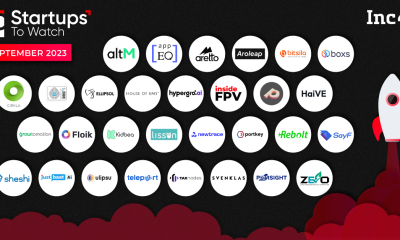
 Startup Stories1 year ago
Startup Stories1 year agoStartups That Caught Our Eyes In September 2023
-
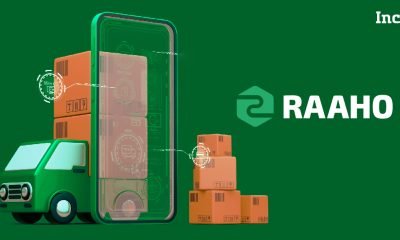
 Startup Stories1 year ago
Startup Stories1 year agoHow Raaho Is Using Tech To Transform India’s Fragmented Commercial Trucking
-

 Startup Stories11 months ago
Startup Stories11 months agoMeet The 10 Indian Startup Gems In The Indian Jewellery Industry’s Crown
-

 Crptocurrency8 months ago
Crptocurrency8 months agoLither is Making Crypto Safe, Fun, and Profitable for Everyone!
-
 Startup Stories1 year ago
Startup Stories1 year agoHow Volt Money Is Unlocking The Value Of Mutual Funds With Secured Lending
-

 E-commerce1 year ago
E-commerce1 year agoTop Online Couponing Trends To Watch Out For In 2016
-
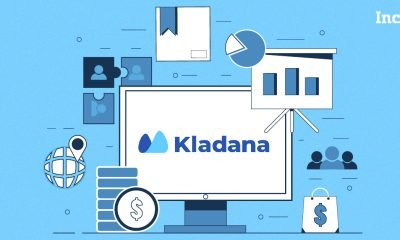
 Startup Stories1 year ago
Startup Stories1 year agoWhy Moscow-Based Kladana Considers Indian SME Sector As The Next Big Market For Cloud Computing




